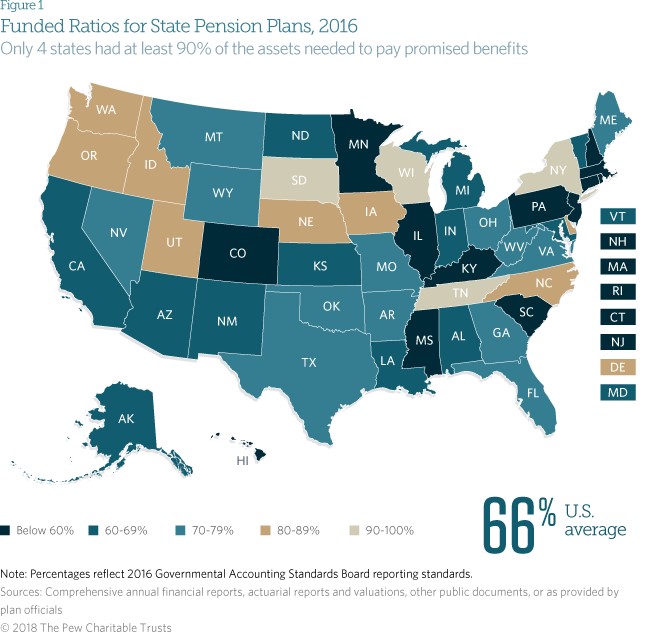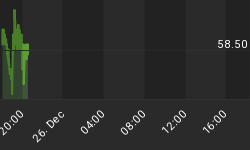U.S. state pension funds need at least $4 trillion to pay benefits they promised government workers and they only have $2.6 trillion, so filling in the massive and growing funding gap might mean getting a lot riskier with investments.
According to the latest report from the Pew Charitable Trust released this week, but covering year-end 2016, pension liabilities in all 50 states increased by $295 billion to $4 trillion as of the end of 2016--and 2017 is expected to show some improvement, but heightened risk.
The State Pension Funding Gap: 2016 shows that while pensions were well-funded until 2000, since then, it’s been an uphill battle, with states increasing benefits without capabilities to pay for them. Pew notes 15 annual increases since 2000.
While taxpayer contributions have increased over the past decade, overall pension debt is still rising.
Investment returns were rather dull in 2016. While pension administrators were banking on returns of around 7.5 percent in 2016, they got only 1 percent.
“Preliminary information for 2017 indicates that the year’s strong investment performance will decrease reported unfunded liabilities, as public pension funds […] experienced gains from the upswing in financial markets,” Pew noted in its report.
“However, that same market volatility could have an adverse impact in the long term, especially if lawmakers also fail to make adequate annual contributions to state plans.”
But not all states are equal by any stretch of the imagination. Policy choices are the line in the sand here. Those states with a record of making actuarial contributions, managing risk and avoiding unfunded benefit increases are in a much more stable pension place right now. Related: These Eight Market Trends Are At A Tipping Point
Only four states had at least 90 percent of the assets they needed by the end of 2016 to pay for the benefits they promised.

(Click to enlarge)
So where are pensions being put at risk today?
Here are the worst 5:
#1 Kentucky: It has the lowest operating cash flow ratio with 31 percent funded.
#2 New Jersey: Same as Kentucky, New Jersey has only 31 percent of the funding it needs to cover pension promises, and it would need an estimated $6 billion a year in contributions from the state to stabilize its pension system.
#3 Illinois: Illinois has a little bit better funding but with 36 percent covered—but that’s still less than half what they need and the penchant for increasing benefits here with nothing to cover promises has been a serious problem.
#4 Connecticut: Even though it is home of one of the wealthiest populations, it still can only cover 41 percent of its pension funding.
#5 Colorado: Colorado takes the fifth place on this list with 46 percent funding.
So where would you rather get your pension benefits from, if you had a choice?
Related: China Ups Pressure In Artificial Intelligence Race
#1 Wisconsin: This state has 99 percent pension funding and its investments showed double-digit earnings in 2017. Both funds, the Core Fund and the Variable Fund, outperformed the benchmark return levels. These funds cover pensions for almost 198,000 retired public employees.
#2 South Dakota: Just few percentage points behind Wisconsin, South Dakota has 97 percent pension funding.
#3 Tennessee: 94-percent funded
#4 New York: 91-percent funded
#5 Nebraska: 89-percent funded
So what’s next? According to Pew, riskier investments, at least for the more desperate among the pension funds. The level of risk states are willing to take on to meet investment targets has never been higher, according to the report.

(Click to enlarge)
And if it’s not risky investment, the only other solution is higher taxes and bumping up the retirement age so that people have to stick it out in the workforce a bit longer.
By Josh Owens for Safehaven.com
More Top Reads From Safehaven.com:
















